Operations are almost fully automated at Melbourne's port terminal. Port digitalisation is revolutionising shipping logistics. KfW IPEX-Bank is one of seven international banks that believe this is where the future lies.
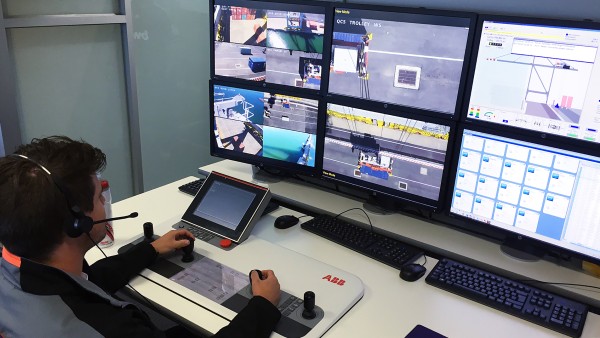
Melbourne's Victoria International Container Terminal is setting new standards in automation of port logistics. Loading and unloading is now guided from the control room.
Emmanuel Sartitsis looks around Webb Dock East in the Port of Melbourne with an air of satisfaction. The manager responsible for infrastructure at Victoria International Container Terminal (VICT) has pulled off a tour de force. “We completed our terminal in only 31 months and spent less than planned. I’m still amazed that we managed it given the complexity of the project,” he said.
Sartitsis and Anders Dømmestrup, CEO of VICT Limited, worked with their team to deliver the highest standards of state-of-the-art port logistics. After all, they say, there is currently no other terminal that is more automated than this one. Another advantage, according to Sartitsis: “Our terminal means that ocean liners with up to 12,500 container units can now dock in Melbourne.” The terminal’s location in front of the entrance to the port gives it a real competitive edge. “The captains love the fact that they can save two to three hours in travelling upstream thanks to us.”
VICT is changing the entire logistics landscape on Australia’s east coast. The oversized Post-Panamax and Neo-Panamax vessels set new efficiency standards because the goods can be turned around even more quickly.
FACTS AND FIGURES
The key figures for VICT:
- Terminal size, including an empty container park (ECP): 35.4 hectares
- Shipyard length: 660 metres
- five neo-Panamax cranes
- 20 Automatic Stacking Cranes
- 11 Automatic Container Carrier
Source: VICT Ltd.
Efficient handling
VICT offers two berths for the shorter Post-Panamax (318 metres) or one berth for the Neo-Panamax category (366 metres). These cargo ships can fit only through the new locks of the Panama Canal - hence their name. The cranes at Webb Dock East can load and unload the cargo ships and independently move the containers back and forth between the warehouse and the quay in the process.
However, efficiency does not begin at the quayside but with the paperless registration process at the entry to the port site. HGV drivers are the only people there. The drivers enter the port using electronically allocated booking slots. An optical letter and number plate recognition system identifies the vehicle and the Terminal Operating and Logistics System (TLS) validates the upcoming transactions. The TLS becomes a guidance system for the drivers; it processes all of the relevant data in a matter of seconds, analyses it and sends it on to the next interface. This is also how the automated cranes and container vehicles receive their orders.
Read more under the image gallery.
MODEL FOR THE FUTURE
The Port of Melbourne is the largest port in Australia. Operations are fully automated at Victoria International Container Terminal.
That is why it looks as if an invisible conductor were working on the shipyard. But what would appear to be moved by an invisible hand is in fact monitored by real people – no longer from the crane cab or the dock itself but from the control room. The precise interplay between humans and technology allows the container ships to be handled much more quickly than anywhere else. Even the weighing of containers takes only ten seconds. Thanks to automation and digital remote control, the containers make it on to the trucks nearly six times faster than in other locations – getting the goods out to Australian consumers with less of a delay.
Economic exchange between Germany und Australia
The state-of-the-art VICT logistics model won over the Port of Melbourne Corporation and seven international investors led by KfW IPEX-Bank, which was responsible for the syndicated loan. “The loan allowed us to finance eleven container vehicles and 20 stacking cranes, and the project financing concept even received a prize,” said CEO Dømmestrup. VICT Limited was awarded the “Finance Asia Achievement Award 2016” for Australia and New Zealand.
VICT represents a new digital beginning in the world’s ports - also in terms of safety. “Nowadays, technology handles the jobs that used to be the most dangerous at the quayside, for example the container locking activities,” Dømmestrup said.
Employees who used to work on the docks are now based in the control room, including the former crane operators. They have undergone further training to qualify as STS controllers and have been freed from the isolation of the crane cabs. “Everyone I asked was glad to have direct contact with their colleagues,” explained Dømmestrup. “And of course nobody sitting at an ergonomic workstation responsible for controlling their machine misses the back pain either.”
Follow-up on 18 December 2020
There was a change in the Management Board in November 2019. Tim Vancampen replaced Anders Dømmestrup. The people responsible for the project are satisfied with how the port has developed. It is proving particularly valuable during the coronavirus crisis as more and more large ships are coming to the terminal in Melbourne. As recently as November 2020, the port reported a new record for Australia: 6,516 containers (equivalent to 11,037 TEU) were unloaded within 90 hours in just one discharge. Plans are therefore already underway for additional expansion of the terminal.
Published on KfW Stories: 29 March 2017; last updated 18 December 2020.

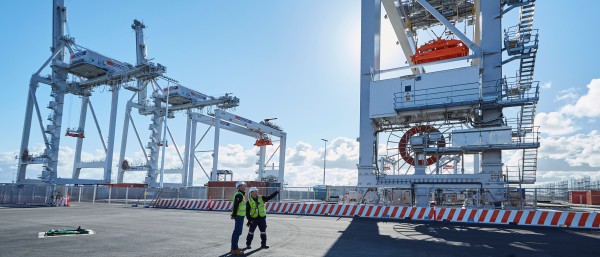
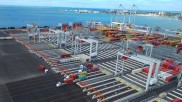
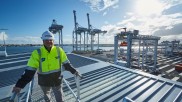
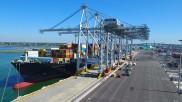
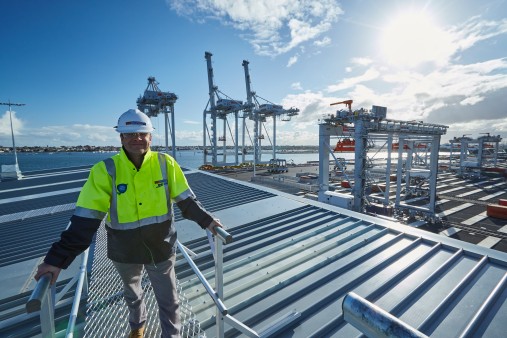
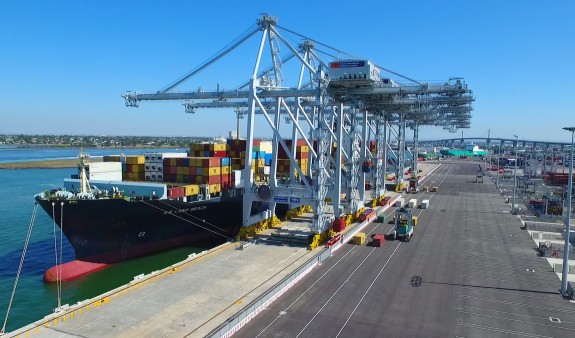
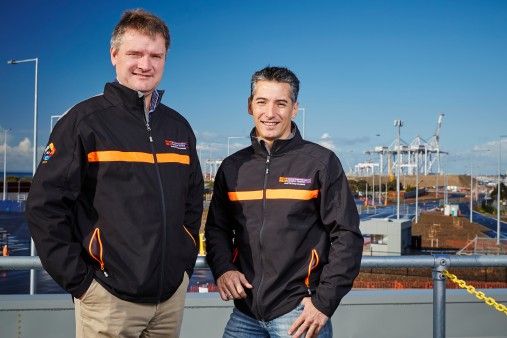
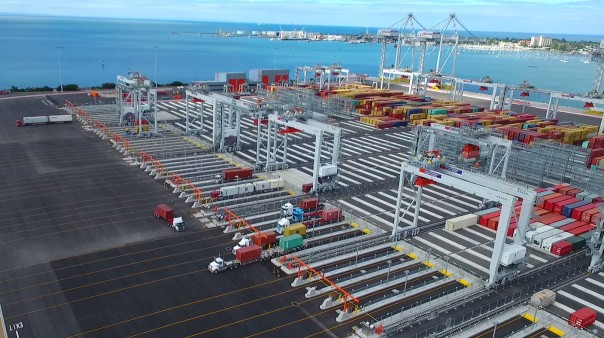




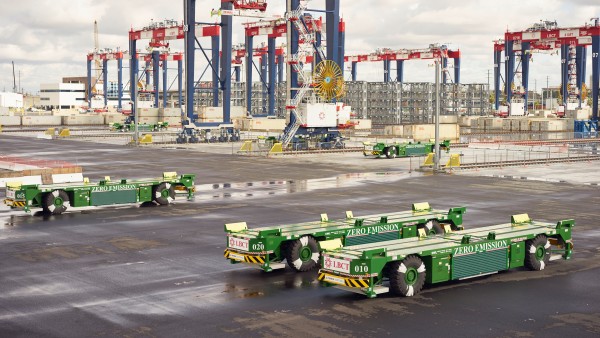
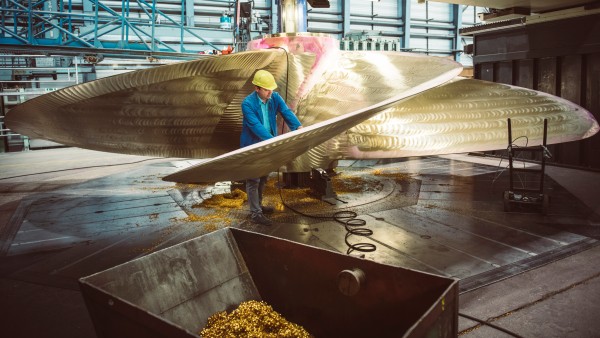
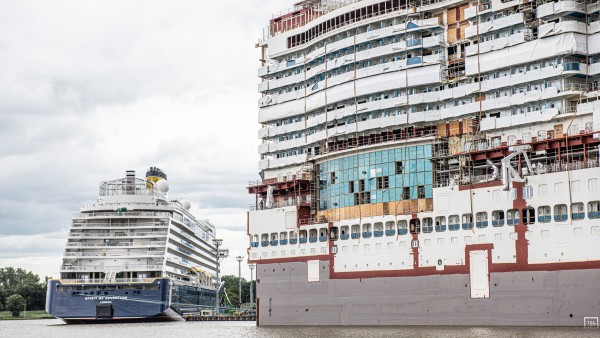
Data protection principles
If you click on one of the following icons, your data will be sent to the corresponding social network.
Privacy information